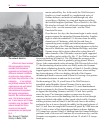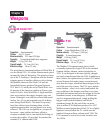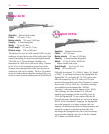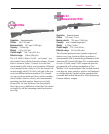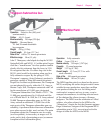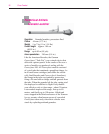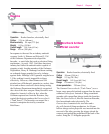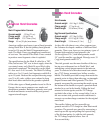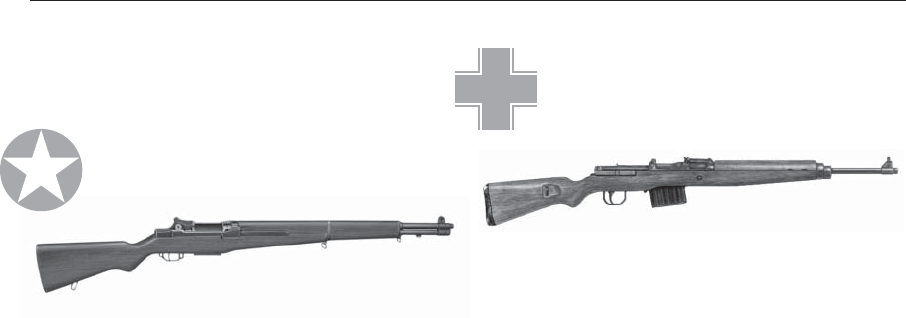
Chapter 5 Weapons
91
Garand Rifle
Operation
Semiautomatic
Caliber
.30 (7.62 mm)
Muzzle velocity
853 mps (2,800 fps)
Capacity
8-shot clip
Weight
4.3 kg (9.5 lbs)
Overall length
110.7 cm (43.6 in.)
Effective range
550 m (600 yds)
The U.S. Rifle, Caliber .30, M1—or Garand—was
the standard issue rifle for American infantry. Named
after its inventor, John C. Garand, it was the first
semiautomatic rifle widely used in combat. Although
it was adopted by the Army in 1936, the Garand was
in short supply until 1943, but by the end of the war
over four million had been produced. The Garand
was easy to disassemble and clean, and its combina-
tion of caliber, muzzle velocity, and semiautomatic
operation provided superior firepower over bolt-
action rifles. Its only weakness was that partially
fired clips were so difficult to reload that GIs tended
to simply fire off the remaining rounds and insert a
new clip.
Gewehr
43
Semiautomatic Rifle
Operation
Semiautomatic
Caliber
7.92 mm (.31 in.)
Muzzle velocity
745 mps (2,445 fps)
Capacity
two 5-round magazines
Weight
4.55 kg (10 lbs)
Overall length
114.3 cm (45 in.)
Effective range
550 m (600 yds)
The Germans produced many superb weapons of
almost every type, but their efforts to produce a
semiautomatic rifle to match the performance of the
American M1 Garand fell short. The semiautomatic
Gewehr 43 (rifle, model 1943) improved upon the
gas-operated, self-cocking mechanism of Carl
Walther’s G41 semiautomatic rifle, but both models
were heavier, more complex, and less well-balanced
or reliable than the Garand; neither supplanted the
venerable bolt-action Mauser Kar 98 as the primary
German infantry weapon.




